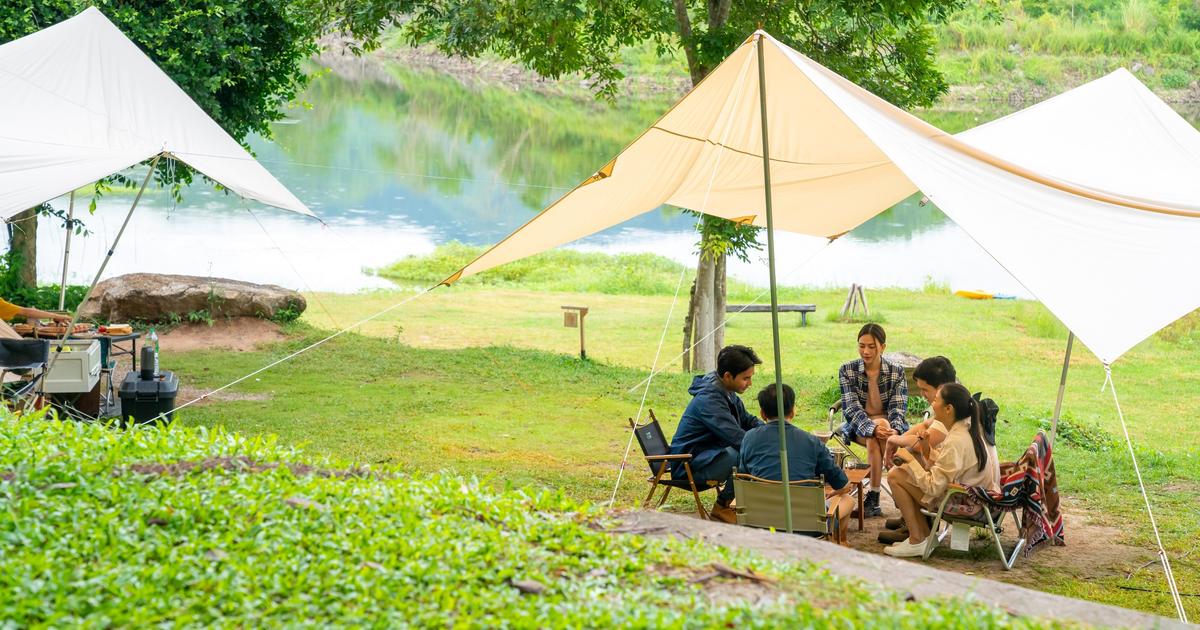Mountain parks and nature reserves are increasing preventive measures.
At dawn, the Jovet lakes, in the Contamines-Montjoie nature reserve, in Haute-Savoiereveal their raw splendor. These bodies of water, shelters of a discreet fauna, including marmots, come alive with the timid rays of the morning. A spectacle that will no longer be possible to observe from your tent. From July 1st to August 31st, bivouac on the sectors of the Laghetti di Jovet and the Plan Jovet mountain pasture, which are located at more than 2100 meters above sea level, it is strictly forbidden. Furthermore, it will no longer be possible to swim in the lakes, from now on all year round.
“In the months of July and August we count between 40 and 50 tents per evening around the Jovet lakes, which can represent up to almost 100 people in bivouac, without toilets or bathrooms,” Geoffrey Garcel, technical ranger of the Contamines-Montjoie nature reserve, told us recently. Behind these bans emerges the issue of incivility, which has been increasing in the park since the end of Covid. Wild barbecues, increased swimming in mountain lakes, degradation of the flora… Incivility which ended up leading to sanctions.
The case of Contamines-Montjoie is far from isolated. With the end of Covid restrictions, the profile of hikers and campers has changed in many regional parks and nature reserves. “There was a turning point in 2021. In the Hautes-Alpes we welcomed many more customers, with a growing number of internationals (Italians, Belgians, Dutch and British) and younger profiles”observes Yvan Chaix, director of the department’s development agency. This results in a lack of knowledge of the mountain environment. “In the Hautes-Alpes we were faced with an uninformed public who, due to lack of information, may have engaged in behavior deemed deviant or unsuitable for the mountains”.
Abuse and conflicts of use
In Isère, the same observation. The proximity of the town of Chamrousse to Grenoble, 45 minutes by car, has attracted many citizens, little aware of the practices at altitude. “During the summer we noticed the destruction of some trees at Lake Achard. There were also abuses in areas where it is forbidden to light fires and bivouac times were not respected. We left the tents for a week. There was too much swimming in the lake, with consequences for the ecosystem. It had become nonsense.”recalls Christopher Hardy, director of the Tourist Office of the resort who saw Jean-Claude Killy triumph at the 1968 Winter Olympics. In winter, conflicts of use multiplied on the slopes, between skiers and alpine skiers.
In the summer of 2020, a municipal decree prohibited bivouacing around Lake Achard. “Ecometers have been set up to manage the flows. A green guard and a pastoral mediator have also been hired. We have also removed Lake Achard from our communication spaces”, continues Christopher Hardy. With an immediate effect: visitor flows around the water point decreased by 30%. “Respect for this natural space has returned. But the problem is that if we ban one of our lakes, the flows will move to another., fears the director of the tourist office. In Chamrousse, in addition to public information and support campaigns, other avenues are being evaluated, such as the possibility of creating special areas.
Transform artificial lakes into bivouac sites
“We have three hillside reservoirs (artificial lakes used for water storage, ed.), and we are trying to transform one of them into a natural space to host bivouacs and fishing activities. With another we are trying to collaborate with the prefect and the department to obtain authorization that would allow us to bathe in the basin from time to time”, explains Christopher Hardy. Many actions that could lead to regulation of behavior.
Further north, in the Vanoise National Park, which celebrated its 60th anniversary last year, the long-term conservation policy is an example for regional parks. “Visitors generally behave well. There is little incivility, no waste. They know they have to be careful.”assures Anne-Laure Pecheur, sector manager in Pralognan for the Vanoise National Park.
Signage, awareness policy on bivouacking, forays onto trails… bivouacking is only possible in certain designated areas. Water management is also an important part of preserving the territory: “In some refuges we have developed ‘nudges’, small incentive messages on the correct use of water and how to moderate its consumption in the refuges”, continues. In the Écrins National Park, between Isère and the Hautes-Alpes, emphasis is also placed on the accompaniment of visitors by mountain professionals.
“We are giving more and more importance to the use of guides. When a professional accompanies us, the right actions are taken”notes Yvan Chaix, from the Hautes-Alpes. «From this year we will also involve mountain rescue professionals to raise awareness of safe actions». Solutions that bear fruit in the long term, even if difficulties remain. “The biggest challenge for us is to circulate information. The territories we cover are vast”adds Yvan Chaix. With a conclusion: “we must favor some less fragile but equally beautiful places. We must organize the flows”.
